With their eyes fixed firmly on the road ahead, the riders in the 2017 Tour de France prologue time trial through the streets of Düsseldorf on July 1st will have no thoughts for the buildings they pass.
Which is a shame, because as a city Düsseldorf has more than its fair share of buildings which are not only architecturally interesting and important, but whose stories are often interesting and important in wider cultural contexts.
Interesting and important architecture and stories the Tour de France competitors could become acquainted with. If they just slowed down.
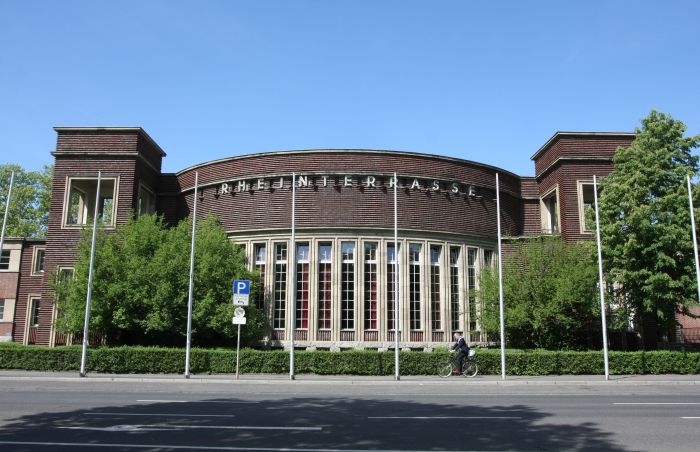
The 2017 prologue time trial starts and ends at Düsseldorf Messe, consequently the riders will be settling into their rhythm, concentrating on their cadence, as they pass the city's Nordpark. Realised for the NSDAP's 1937 Reichsausstellung Schaffendes Volk propaganda exhibition, and thus a park inextricably linked with all the cultural historic problems of that period, the contemporary Nordpark features a mix of managed meadows, (managed) wild meadows and numerous themed gardens: varying vegetation which contrasts and colludes to make the Nordpark a genuine oasis of calm. And thus while the riders may miss it on the way out, it is a good tip for a bit of post-race relaxation.
Following the Rhine upstream the route takes the riders through Düsseldorf-Golzheim and past the innumerate fashion agencies who call the city's northern suburb home. Not that there is anything Schickimicki, far less painfully cool, about Düsseldorf's fashion district, here it is strictly business. Long one of Germany's most important textile centres, since the late 1940s Düsseldorf has in addition been the most important fashion business centre in Germany. If not Europe. In other cities models teeter along catwalks while local politicians sup cocktails with TV starlets. In Düsseldorf clothes are sold. And the buildings reflect this matter of fact nature: self-confident, with an aura of reserved ostentation.
A description particularly applicable to the former US consulate building at Cecilienallee 5.
Built in 1955 by US mega-concern Skidmore, Owings & Merrill as part of an extensive post-War embassy construction programme, a programme, somewhat invariably, intended to establish America's political and cultural dominance as much as provide office space for diplomats, the Düsseldorf consulate with its strictly quadratic, glassed fronted character and use of "floating" elements to confirm its lightness and transparency, stands in apparent conflict to its more classical orientated neighbours; yet its unassuming grandeur allows for a peaceful dialogue, and neatly underscores Alphonse Karr's maxim plus ça change, plus c'est la même chose. In addition the work nicely documents both a shift in thinking about representative, diplomatic architecture, and also how the functional, modernist architecture which began in Europe was re-imported post-War with an American accent.
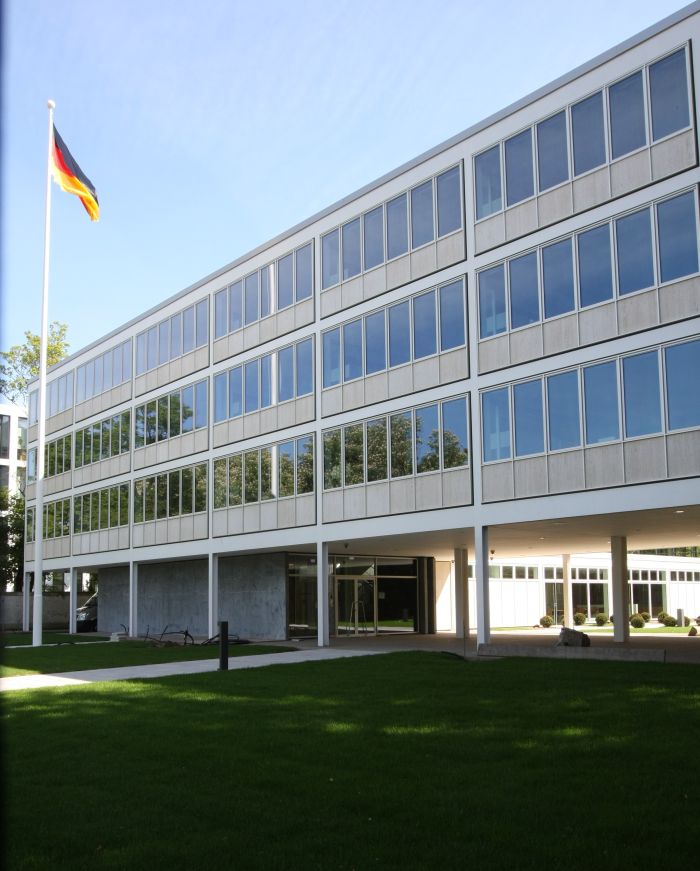
After breezing past the former US consulate the riders arrive at one of Düsseldorf's architectural and cultural gems, the so-called Ehrenhof. Built in 1925/26 by the architect Wilhelm Kreis and making ample and well-considered use of brick as both construction material and ornamentation, the Ehrenhof complex has all the grace and grandeur of classic Roman architecture, without any of the supremacy such monumental architecture often projects. Even if aspects, in particular the angled plinth Rhine-side, point towards the coming monumental fascist architecture. Which was very much about supremacy. And architecture to which Wilhelm Kreis contributed to through numerous commissions for the NSDAP: contributions which saw him listed as one of 12 Irreplaceable Artists on the so-called Gottbegnadeten-Liste - God-gifted List - a list compiled by Goebbels and Hitler of 1,041 artists, architects, and musicians considered leading representatives of Nazi culture.
Originally constructed as a trade fair site, in the late 1990s the Ehrenhof complex was widely renovated, including the construction of a new building by Oswald Mathias Ungers behind the Kunstpalast facade, and today the Ehrenhof is home to a collection of museums, concert and hospitality venues. Aside from wishing the riders would take time to properly admire the symmetry and harmony of the complex, we really hope one of the tour participants stops to view the exhibition Mythos Tour de France in the NRW-Forum. Thus becoming part of the Tour mythe. It would be so meta.
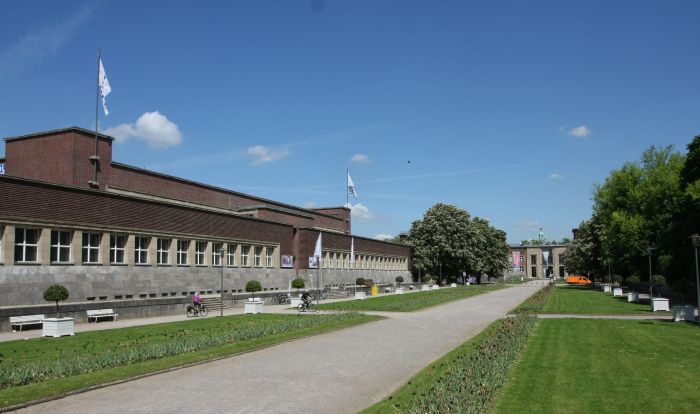
Swinging a bow round the Tonhalle concert hall it's over the Oberkasseler Brücke to the left bank of the Rhine and Düsseldorf-Oberkassel. Developed at the turn of the 19th/20th century as a consequence of Düsseldorf's increasing prosperity, and thus ready market for high-value housing for the city's growing middle and professional classes, it's fair to say Oberkassel remains one of Düsseldorf's higher-end suburbs. Largely developed according to a plan inspired by, and approved by, if not directly by, Josef Stübben, one of the era's leading and most progressive urban planners, Oberkassel is characterised by the way the streets, almost poetically, follow the curve of the Rhine; by the meadow next to the river which separates Oberkassel not only from the industry of the river, but Düsseldorf, and in doing so creates an almost rural, pastoral, calm; and perhaps most strikingly by the houses, many of which were built by some of the city's most important architects of the period, including Hermann vom Endt, Oskar Rosendahl and Theodor Balzer.
The riders however will only graze along the Kaiser-Wilhelm-Ring, a collection of listed houses built between 1899 and 1907, very much of the period and thus alternating at will between the dazzling and the distressing.
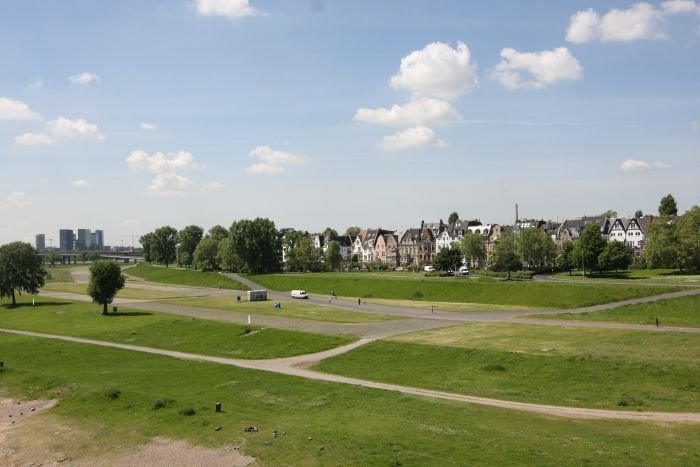
After the briefest of stays on the left bank, and pushing a high gear into the wind, its over the Rheinkniebrücke towards downtown Düsseldorf. Just before reaching the right bank the riders pass the so-called Mannesmann-Haus from 1912 by Peter Behrens and its youthful confrère, the 1958 Mannesmann-Hochhaus by Düsseldorf's own Paul Schneider-Esleben: the former an early example of an adaptable, open plan office building where the layout of each floor could be reconfigured as the situation demanded, and a project to which the, then, whipper-snappers Walter Gropius, Mies van der Rohe and Le Corbusier contributed while in Behren's employ; the latter the first steel tube, skeleton frame skyscraper in Germany, and a work based largely on principles developed by the likes of Gropius, van der Rohe and Le Corbusier. Even if Le Corbusier did call it a "cellophane packet". And thus two buildings which although apparently contradictory, when not violently juxtaposed, demonstrate that the much famed "breaks" in architecture are more often than not evolutions motivated by new materials, new technology and responses to the prevailing, new, realities, rather than true new beginnings.
Oh how we wish the riders would glance up for a second!
There is in addition something very satisfying in the way Mannesmann commissioned two architects who were radical for their day, radical not for its own sake, but from principle. And how Mannesmann, when admittedly not always unreservedly, encouraged them in their radicalism, and, if you will, thereby realised Corporate Architecture which although very much about being representative of the company, exists as "corporations advancing architecture" rather than "architecture as corporate identity". The riders will understand the difference if they glance right on leaving the Rheinkniebrücke and view the Frank Gehry buildings, twisting and turning their self-reverent dance on the harbour front.
And so, yeah, in retrospect, probably better to keep your eyes firmly on the road.
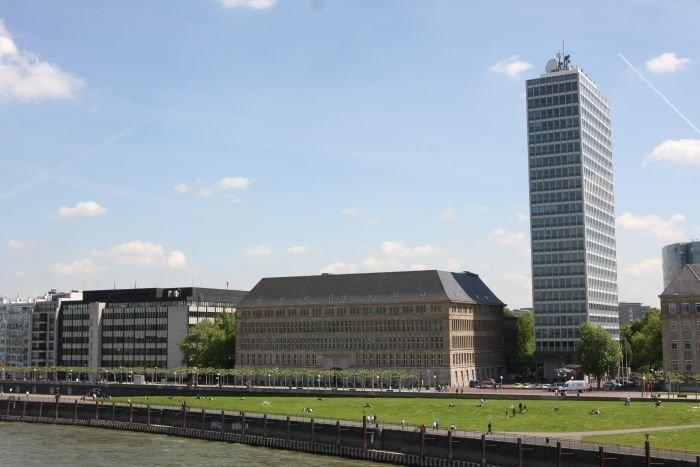
Swinging round past the K21 art museum it's onward to the city centre and the Königsallee: that symbol bar none of Düsseldorf as a city of the beau monde, the fashionable jet set. That more humble culture can suffer in the face of such superficiality can be understood when the riders roll past Königsallee 40: former home of the Lichtburg cinema, built in 1910 as one of Germany's earliest cinemas, and now flagship stores for international fashion labels. Not even the, theoretically, listed, facade and neon sign remain to stand vigil.
Turing left off the Königsallee, past Warenhaus Tietz by Joseph Maria Olbrich, the riders head straight for the so-called Wilhelm-Marx-Haus from 1924, a further work by Wilhelm Kreis, Germany's first skyscraper and a wonderful example of the early art of skyscraper construction. As with its contemporaries in Chicago the Wilhelm-Marx-Haus largely retains the tripartite construction model of classicism, yet whereas in Chicago new forms of windows and window arrangements were developed, Wilhelm Kreis remains truer to more traditional proportions and motifs.
Down the Heinrich-Heine-Allee, sliding as they go between the reserved calm of the Opera House from 1956 by Paul Bonatz, Julius Schulte-Frohlinde and Ernst Huhn and the much more brazen K20 art museum by Copenhagen based Dissing+Weitling with its unwavering black Bornholm granite facade, the riders skirt the Altstadt, its Altbier bars and pizzerias, before a very tight 90 degree left hander brings them round the back of the Kunstakademie by Hermann Riffart from 1879, and Alma mater of the likes of Josef Beuys, Jörg Immendorff, Thomas Ruff, Gerhard Richter or Andreas Gursky, before rolling on back down the Rhine to the trade fair with a final sprint at the finish.
And a well deserved rest in Nordpark. Assuming that is they've read this.
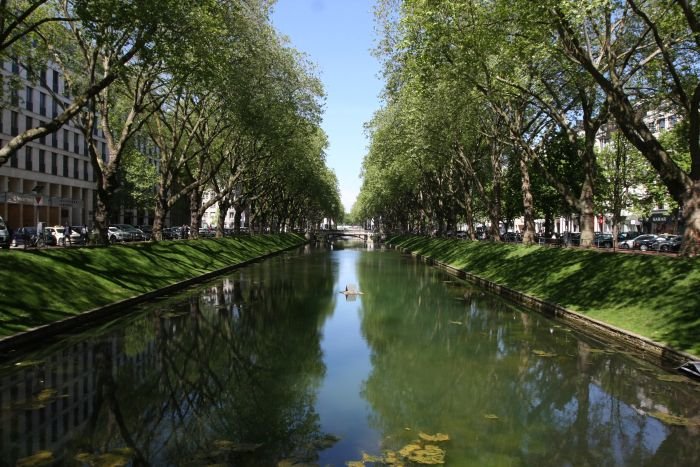
Just as interesting as what the riders, theoretically, have in sight, is what is in the very near vicinity: buildings such as, and amongst many others, the Dreischeibenhaus from 1960 by Hentrich + Petschnigg, the Stadttor from 1998 by Petzinka, Overdiek and Partner or the Schauspielhaus from 1970 by Bernhard Pfau, its outline charmingly reminiscent of a sleeping baby elephant, all adding to Düsseldorf's architectural variety and heritage. A particular highlight for us being the 1924 Stummhaus by Paul Bonatz on Breite Strasse, a building which despite its height and Gothic disposition is very discreet, the well considered proportions bequeathing it a pleasingly reserved civility.
A little further away from the course one finds locations such the former Atelierhaus in the Gladbacher Straße where Heinz Mack and Otto Piene established the art collective ZERO, the former Kling Klang studio in the Mitropestrasse where not only Kraftwerk honed their sound and technology, but where bands such as La Düsseldorf and Neu! also worked and recorded, or the former Voss bakery in Linienstraße where Heino became a Baker and Confectioner Master.
And staying on things counter-culture, in the Altstadt one finds the bars, the dens of iniquity, where over generations Düsseldorf's creatives sought solace and inspiration, and where post-war in the likes of Creamcheese or the Ratinger Hof the stubborn indifference of the hippy gave over to the youthful frustrations of punk and electronica. Or at least one finds the alleyways where rebellion found its voice; contemporary construction and renovation meaning that the "Alt" is more theory than practice, and the dens of iniquity have largely become highly polished dens of commerce and very agreeable family homes.
Rien n'est permanent, sauf le changement.
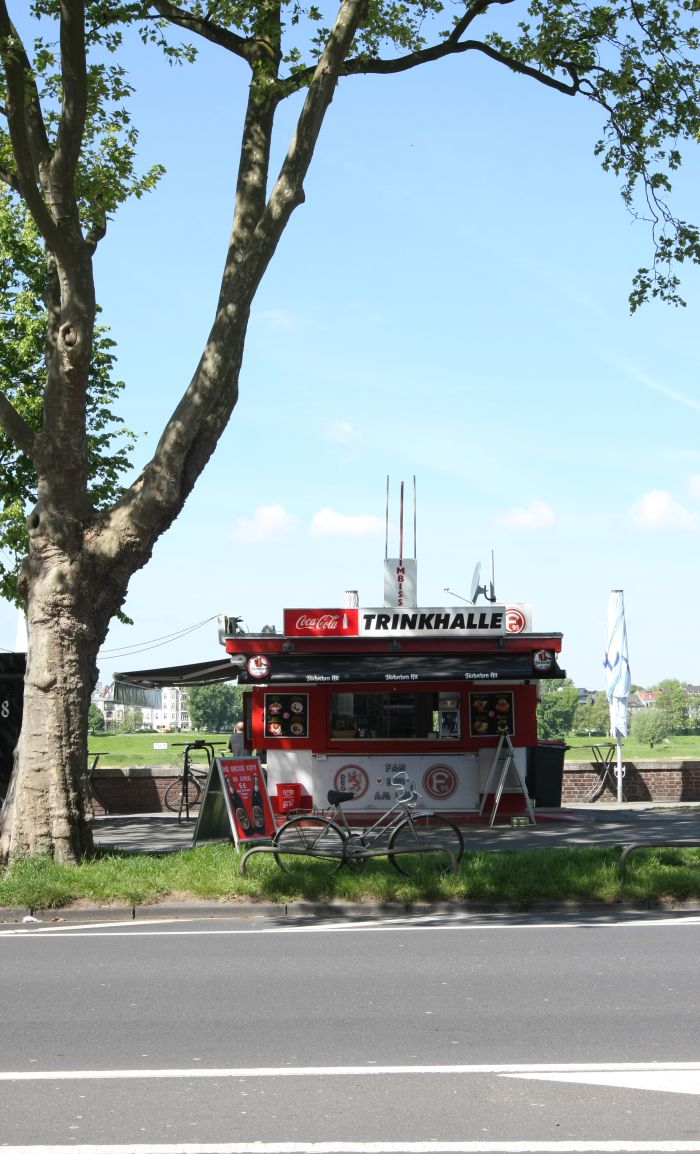
By way of an orientation aid we have published a google map featuring a selection of some of the most interesting and important buildings on the 2017 Tour de France prologue route.
The map doesn't feature everything it could. Arguably it would be unwise, and confusing, if it did, less famously being more, but we hope it provides a taste of Düsseldorf's architectural diversity. And motivates for further exploration.
With or without a bicycle.